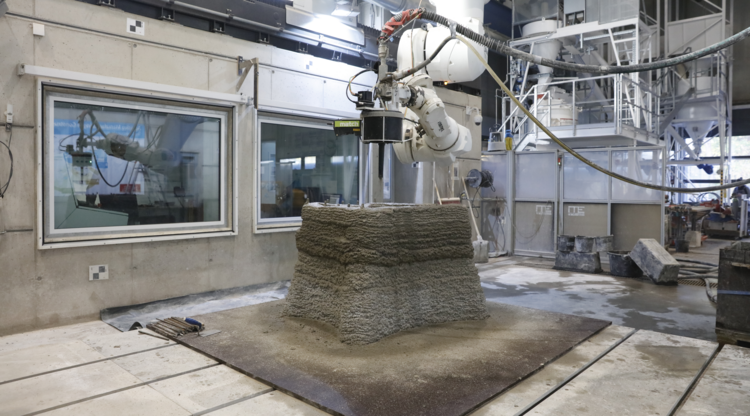TRR 277 Additive Manufacturing in Construction

| E-Mail: | lachmayer@match.uni-hannover.de |
| Team: | Lukas Lachmayer, Hauke Heeren |
| Year: | 2020 |
| Funding: | DFG |
In the development of the steadily increasing number of construction projects, the low productivity of the building industry is becoming publicly noticeable in the form of postponed opening dates. While capable programmes are steadily shortening the planning and design phases, and finished elements are available in large quantities, manual joining processes, production-related rework on the construction sites, and individual design requirements are creating considerable delays and quality losses. Therefore, the greatest potential for increasing productivity lies in the development of an automated manufacturing process that delivers high-quality components without setting tight specifications regarding component design.
Based on these requirements, the enablement of additive manufacturing processes for the production of large-scale concrete components is being advanced within the framework of the DFG-funded project: "Additive Manufacturing in Construction". The goal is a fully automated manufacturing process based on a design-optimised CAD component, taking into account locally defined material properties. To this end, potential materials, application methods and process designs are being researched across disciplines and locations. In particular, the avoidance of individual formwork work, the in situ production of reinforcements and the safeguarding of the final contour using an active process control, with maximum design freedom at the same time, must be implemented for the desired degree of automation.
To this end, match is developing advanced path planning algorithms that take better account of the time-dependent material behavior of fresh concrete than current 3D printing processes. In order to enable a “print-while-driving” with mobile robots, the research focuses on trajectory planning, taking into account the dynamic and kinematic capabilities of the robots. In the same time, hardware and software upgrades are being researched that minimize location and position deviations and support the precise execution of the planned paths. In addition, the match focuses on the development of cooperative multi-robot systems that enable parallelization and acceleration of future manufacturing processes while ensuring high final contour quality.




















